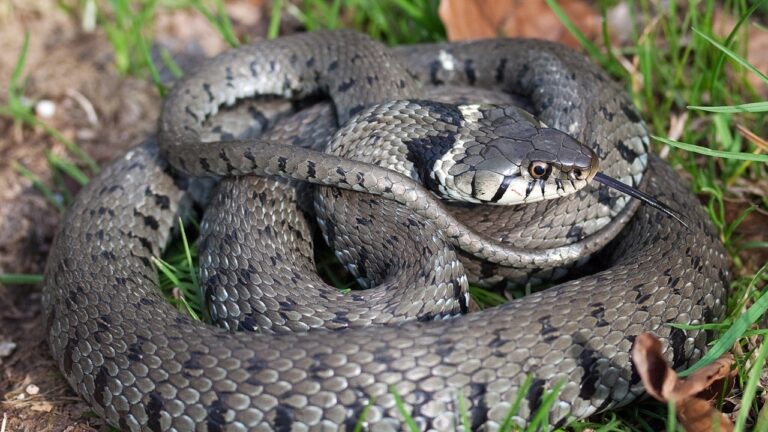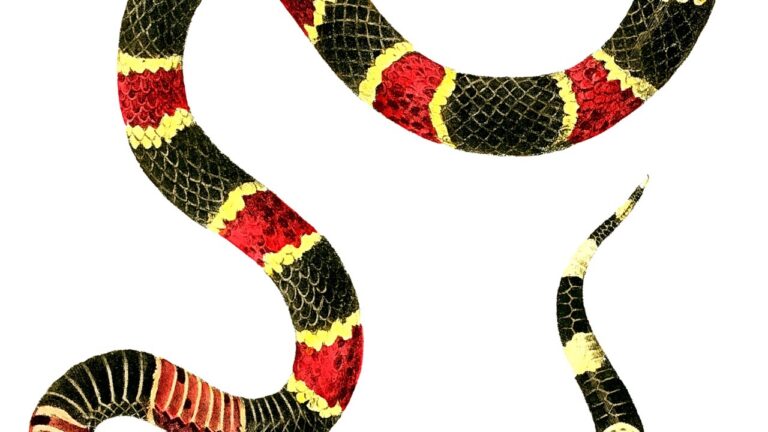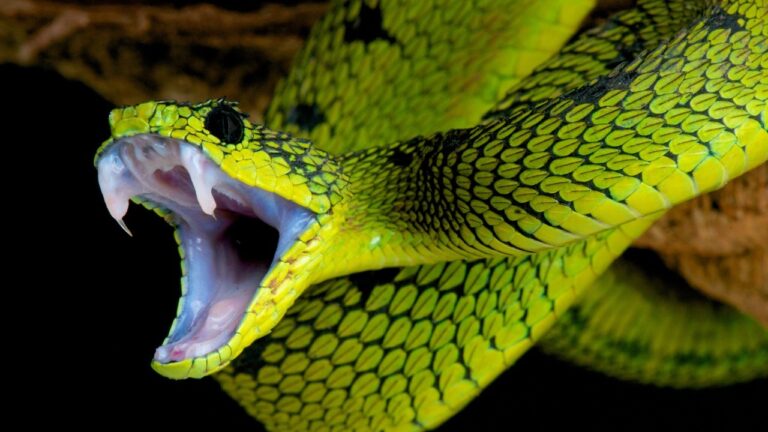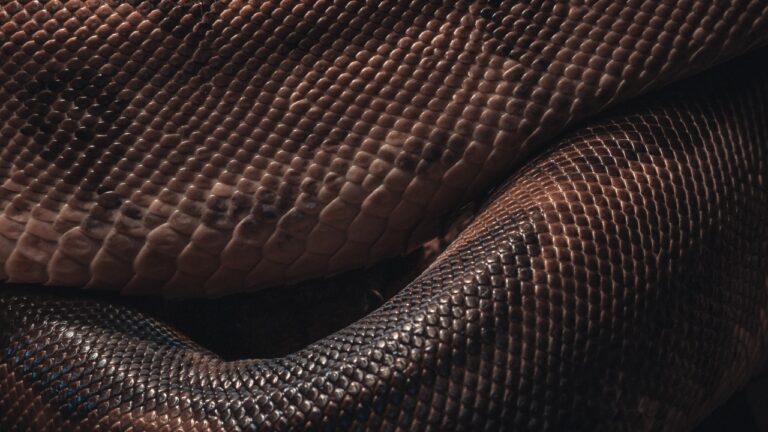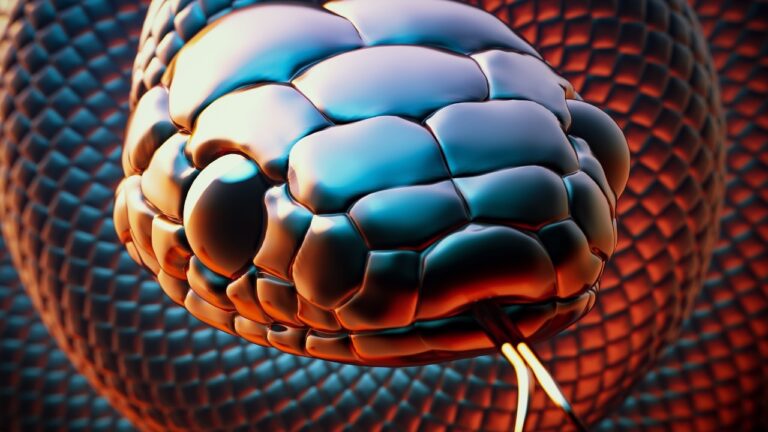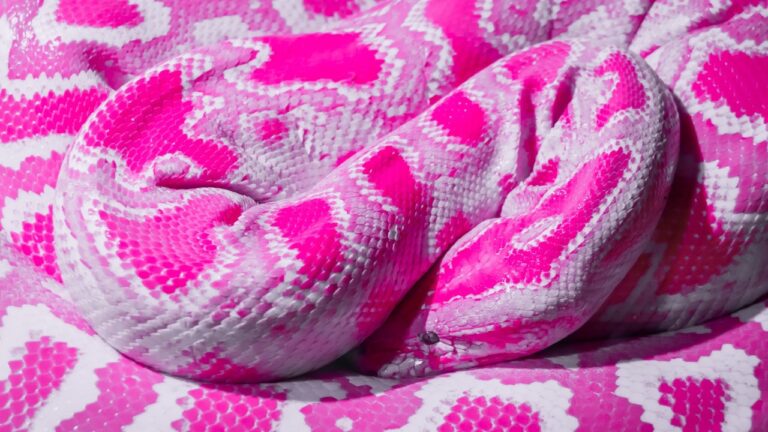Feeding Snakes: Expert Tips for Snake Food Preparation
Importance of proper snake food preparation
When it comes to the health and well-being of our slithering friends, proper snake food preparation is of paramount importance. Snakes, being carnivorous creatures, have specific dietary needs that must be met to ensure their vitality and longevity. Whether you’re a seasoned snake owner or a beginner exploring the fascinating world of reptiles, understanding the intricacies of snake feeding is crucial.
Feeding a snake goes beyond simply providing sustenance; it is an art form that demands knowledge, precision, and care. By taking the time to prepare their food properly, you can contribute to their overall health and prevent potential complications. From sourcing the right prey to ensuring proper nutrition and monitoring feeding behaviors, each step in the process plays a vital role in keeping your slithery companion happy and thriving.
In this comprehensive guide, we will delve into the depths of snake food preparation, covering everything from the types of snakes and their diets to the best techniques for feeding them. Whether you are considering live prey or opting for the convenience of frozen alternatives, we have you covered. We will explore the benefits of each method and provide expert tips to ensure your snake’s nutritional needs are met.
So, whether you are looking for tips on sourcing the best snake food suppliers or seeking advice on creating homemade snake food recipes, this article is your go-to resource. By the end, you will be equipped with the knowledge and confidence to become a master in snake food preparation. So, let’s slither into the world of snakes and uncover the secrets to keeping them well-fed and content.
Understanding Snake Diets
When it comes to keeping snakes as pets, one of the most crucial aspects of their care is ensuring they have a proper diet. Understanding the dietary needs of snakes is essential for their well-being and overall health. This section will delve into the types of snakes and their diets, as well as the debate between live and frozen prey.
Types of Snakes and Their Diets
Snakes come in a wide variety of species, each with its own unique dietary requirements. While some snakes are strictly carnivorous, feeding solely on other animals, others may have a more varied diet that includes both vertebrates and invertebrates. For instance, the diet of a corn snake typically consists of small rodents, such as mice or rats, while a garter snake may consume small amphibians and insects.
Understanding the specific dietary needs of your snake is crucial in ensuring their nutritional needs are met. Researching the natural diet of your snake’s species will help you determine the best food options for your scaly companion. Additionally, consulting a reptile veterinarian or experienced snake owner can provide valuable insights into the ideal diet for your specific snake.
Live vs. Frozen Prey
The decision between feeding live or frozen prey to your snake is a topic of debate among reptile enthusiasts. Both options have their advantages and disadvantages, and ultimately, the choice depends on the preferences and needs of your snake.
Live prey can provide a more stimulating hunting experience for snakes. It allows them to exhibit their natural hunting instincts and engage in physical activity. However, feeding live prey comes with risks, as the prey may injure or even kill the snake during the process. Additionally, live prey can introduce parasites or diseases to your snake, which makes proper sourcing and quarantine crucial.
On the other hand, frozen prey offers a safer alternative. Frozen rodents and other animals are readily available from reputable suppliers and are generally free from diseases and parasites. They also eliminate the risk of injury to your snake during the feeding process. However, some snakes may initially refuse to eat frozen prey due to their preference for live prey, requiring a gradual transition.
Ultimately, the decision between live and frozen prey depends on factors such as the species of your snake, their individual feeding preferences, and your comfort level as a snake owner. It’s important to research and experiment to find the best feeding method for your snake’s overall well-being.
Understanding the dietary needs of your snake and choosing the most suitable prey option are crucial steps in ensuring their health and happiness. In the next sections, we will explore the process of preparing both live and frozen prey, as well as additional considerations for maintaining a balanced diet for your scaly companion. Stay tuned!
Want to learn more about snake diets? Check out our article on snake diet for a comprehensive guide.
Curious about the benefits of frozen prey? Dive into our article on frozen snake food to discover more.
Preparing Live Prey
When it comes to feeding your beloved snake, proper preparation of live prey is of utmost importance. Not only does it ensure the health and well-being of your snake, but it also contributes to its overall happiness. In this section, we will delve into the sourcing of live prey and the significance of quarantine and feeding schedules.
Sourcing Live Prey
Finding a reliable source of live prey is crucial for the success of your snake’s diet. While you may be tempted to catch wild prey yourself, it is highly recommended to purchase from reputable snake food suppliers. These suppliers specialize in providing high-quality and disease-free prey, ensuring the optimal nutritional value for your serpent.
When selecting a supplier, consider factors such as their reputation, customer reviews, and the variety of prey they offer. It’s essential to choose a supplier that offers a diverse range of prey sizes to match the specific needs of your snake. Whether you have a small corn snake or a large boa constrictor, having access to a variety of prey options is key to a well-balanced diet.
Quarantine and Feeding Schedule
Once you have acquired your live prey, it is crucial to quarantine them before introducing them to your snake. Quarantining ensures that any potential diseases or parasites carried by the prey are not transferred to your snake, preserving its health and longevity. This step should never be overlooked, as it can prevent a potential disaster.
During the quarantine period, carefully observe the prey to ensure they are active, healthy, and free from any signs of illness. Ideally, this period should last for at least a week, allowing you to closely monitor the prey’s behavior and condition. If any issues arise during this time, it is best to consult a veterinarian who specializes in reptiles.
Once the quarantine period is over, you can start incorporating the live prey into your snake’s feeding schedule. Establishing a consistent feeding routine is crucial for maintaining your snake’s health and promoting proper digestion. Depending on the species and age of your snake, the feeding frequency may vary. Some snakes require feeding once a week, while others may need to be fed every two weeks. It is essential to do thorough research or consult a reptile expert to determine the specific needs of your snake.
Remember, a well-prepared diet is the key to a happy and healthy snake. By sourcing high-quality live prey from reputable suppliers and following a strict quarantine and feeding schedule, you are ensuring that your snake receives the necessary nutrients for its well-being. In the next section, we will explore the alternative option of preparing frozen prey for your snake’s consumption. Stay tuned!
Preparing Frozen Prey
When it comes to feeding your snake, one of the most convenient options is using frozen prey. Not only does it eliminate the need for sourcing live prey, but it also offers several benefits in terms of storage and safety. In this section, we will explore the proper storage of frozen prey, thawing techniques, and ensuring food safety for your slithering companion.
Proper Storage of Frozen Prey
Correct storage of frozen prey is crucial to maintain its nutritional value and prevent any potential health risks for your snake. It is essential to store the prey at the right temperature to ensure its freshness and minimize the risk of bacterial growth.
To begin with, keep the frozen prey at a consistent temperature below freezing. This can be achieved by using a dedicated freezer, preferably one that maintains a temperature of -18 degrees Celsius (0 degrees Fahrenheit) or lower. It is important to avoid storing the prey in a refrigerator freezer, as the temperature fluctuations can compromise its quality.
Furthermore, properly package the frozen prey to prevent freezer burn and dehydration. Place each prey item in a separate airtight container or freezer bag. This not only helps maintain its moisture but also prevents cross-contamination with other food items in your freezer.
Thawing Techniques
When it’s time to feed your snake, it is crucial to thaw the frozen prey properly. Thawing the prey at the right temperature and in a safe manner ensures that your snake receives a meal that is both palatable and safe to consume.
The recommended method for thawing frozen prey is to place it in the refrigerator. This allows for a slow and controlled thawing process, ensuring that the prey maintains its nutritional value and minimizing the risk of bacterial growth. Depending on the size of the prey, it may take anywhere from a few hours to overnight for it to completely thaw.
Please note that it is important to never thaw the prey at room temperature or using a microwave. These methods can lead to uneven thawing and promote the growth of harmful bacteria, which can be detrimental to your snake’s health.
Ensuring Food Safety
Food safety is of utmost importance when it comes to feeding your snake. To ensure the safety of the frozen prey, there are a few key practices to keep in mind.
Firstly, always inspect the prey before feeding it to your snake. Look for any signs of freezer burn, discoloration, or an off odor. If the prey appears to be spoiled or compromised in any way, it is best to discard it and use an alternative.
Additionally, practice good hygiene when handling the frozen prey. Wash your hands thoroughly before and after handling the prey to prevent the spread of bacteria. It is also advisable to clean any surfaces or utensils that come into contact with the prey to avoid cross-contamination.
Lastly, follow a regular feeding schedule to ensure that the frozen prey is consumed within a reasonable timeframe. This helps maintain the nutritional balance in your snake’s diet and reduces the risk of the prey going to waste.
By following these guidelines for storing, thawing, and ensuring food safety, you can provide your snake with a nutritious and safe meal. Remember, if you have any concerns or questions regarding frozen prey or any other aspect of snake food preparation, it is always best to consult with a veterinarian or an experienced reptile specialist.
Continue reading about snake food preparation by checking out our article on snake food suppliers.
Supplementing Snake Diets: Enhancing Their Nutritional Intake
As responsible snake owners, it’s crucial to understand the nutritional requirements of our slithery companions and ensure they receive a well-rounded diet. While snakes primarily feed on whole prey items, it’s important to supplement their diets to ensure they receive the necessary vitamins and minerals for optimal health. In this section, we will delve into the nutritional requirements of snakes and explore the role of calcium and vitamin supplements in their diet.
Nutritional Requirements: Fueling Snake Health and Vitality
Snakes have unique dietary needs depending on their species, size, and age. It’s essential to research the specific dietary requirements of your snake species to ensure you provide a balanced and nutritious diet. Some snakes are strict carnivores, while others may occasionally consume plant matter as well. Understanding the natural diet of your snake will help you replicate it in captivity.
A well-balanced snake diet typically consists of whole prey items, such as rodents, birds, or even other reptiles. These prey items provide essential nutrients like proteins, fats, vitamins, and minerals. However, even the most carefully selected prey items may not provide all the necessary nutrients, especially when it comes to captive snakes.
Calcium and Vitamin Supplements: Filling the Nutritional Gaps
To supplement the natural diet of snakes, calcium and vitamin supplements play a vital role. Calcium is particularly important for snakes as it contributes to bone health and muscle function. Without sufficient calcium intake, snakes may develop metabolic bone disease, a condition that weakens their bones and can lead to serious health issues.
Vitamin supplements, on the other hand, help ensure that snakes receive a balanced array of essential vitamins. These supplements can compensate for any potential deficiencies in the prey items or the snake’s overall diet. Vitamins such as vitamin D, vitamin A, and vitamin E are crucial for various bodily functions, including immune system support, vision, and reproduction.
When it comes to supplementing your snake’s diet, it’s essential to follow the recommended dosage guidelines provided by reputable sources, such as veterinarians or experienced snake breeders. Over-supplementing can be just as harmful as under-supplementing. Striking the right balance is key to maintaining your snake’s health and avoiding potential complications.
Table: Essential Vitamins and Minerals for Snakes
| Vitamin/Mineral | Function | Food Sources |
| ————— | ——– | ———— |
| Vitamin D | Facilitates calcium absorption and bone health | Natural sunlight, UVB lighting, supplements |
| Vitamin A | Supports vision, reproduction, and immune function | Liver, eggs, supplements |
| Vitamin E | Antioxidant, protects cells from damage | Nuts, seeds, oils, supplements |
| Calcium | Essential for bone health and muscle function | Supplements, calcium-rich prey items |
| Phosphorus | Assists with energy metabolism and bone health | Prey items, supplements |
| Vitamin B | Aids in metabolism and nerve function | Organ meats, insects, supplements |
Remember, supplements should never replace the primary source of nutrition for your snake. They are meant to enhance and complement a well-balanced diet. If you have any doubts or concerns about supplementing your snake’s diet, consult a reptile veterinarian or an experienced snake enthusiast for guidance.
In the next section, we will explore various feeding techniques to ensure your snake consumes the supplemented diet you have prepared. Stay tuned for valuable insights on handling live prey safely and monitoring feeding behaviors to guarantee your snake’s well-being.
Internal Links:
- Learn more about snake diets here.
- Find frozen snake food options here.
- Discover tips for snake food preparation here.
Feeding Techniques
When it comes to feeding your snake, there are a few important techniques to keep in mind to ensure a safe and successful mealtime. Handling live prey safely, using tongs and feeding tools, and monitoring feeding behaviors are all critical aspects of snake food preparation that every reptile enthusiast should be familiar with.
Handling Live Prey Safely
When feeding your snake live prey, it is crucial to prioritize safety for both you and your snake. Snakes can become quite excited when presented with live prey, so it’s important to approach the feeding process with caution.
Gloves can provide an extra layer of protection while handling live prey. They not only shield your hands from potential bites but also help prevent the transfer of any harmful bacteria from the prey to your snake. Remember to choose gloves that are durable and offer a good grip to maintain control during feeding.
Additionally, consider using long feeding forceps or tongs to safely present the live prey to your snake. This not only keeps your hands at a safe distance but also minimizes the risk of the prey latching onto your fingers instead of your snake.
Using Tongs and Feeding Tools
Tongs and feeding tools are essential for both live and frozen snake food. These tools allow you to maintain a safe distance from your snake while ensuring precise and controlled feeding.
When using tongs or feeding tools, it’s important to choose ones that are specifically designed for reptile feeding. Look for tools with a secure grip to prevent any accidental dropping of the prey, as this can startle your snake and lead to feeding issues.
To feed your snake using tongs, simply grasp the prey item firmly and present it to your snake in a slow and deliberate manner. This mimics the natural movement of prey and can help stimulate your snake’s hunting instincts.
Monitoring Feeding Behaviors
Observing your snake’s feeding behaviors is crucial for ensuring their health and well-being. By paying close attention to how your snake interacts with their food, you can address any potential issues promptly.
During feeding, watch for signs of aggression from your snake. This can include striking at the prey, constricting it, or biting it repeatedly. These behaviors indicate that your snake is actively engaging with their food and is likely to have a healthy appetite.
On the other hand, if your snake shows little to no interest in the prey or ignores it completely, this may be a sign of refusal to eat. Keep an eye out for any changes in appetite or feeding patterns, as this could indicate an underlying health issue or stress.
By closely monitoring your snake’s feeding behaviors, you can make adjustments to their snake feeding schedule or seek veterinary advice if necessary. Remember, a healthy and well-fed snake is a happy snake!
In conclusion, mastering the feeding techniques of handling live prey safely, using tongs and feeding tools, and monitoring feeding behaviors is essential for any snake owner. These practices not only ensure the safety of both you and your snake but also contribute to their overall well-being. So, take the time to familiarize yourself with these techniques and provide your slithering companion with the best snake food possible.
If you’re interested in exploring more about snake diets and feeding tips, check out our snake diet page and snake feeding tips for further information.
Troubleshooting Common Issues
When it comes to feeding snakes, there can sometimes be hiccups along the way. In this section, we will explore some common issues that snake owners may encounter and provide helpful tips for troubleshooting them.
Refusal to Eat
It can be concerning when your snake refuses to eat, especially if it’s been a while since their last meal. There could be several reasons for this behavior. One possibility is that the snake is going through a period of fasting, which is common in many snake species. However, if the refusal persists for an extended period or the snake is losing weight, it may be a cause for concern.
To address this issue, there are a few steps you can take. First, ensure that the temperature and humidity levels in the snake’s enclosure are appropriate for their species. Snakes are ectothermic, meaning they rely on external heat sources to regulate their body temperature. If the enclosure is too cold, it can lead to a decrease in appetite. On the other hand, if it’s too hot, the snake may become stressed and refuse to eat.
Another factor to consider is the type of food you are offering. Snakes have different dietary preferences, so it’s important to provide them with suitable prey. If you have been feeding your snake the same type of food for a while, try offering a different species to entice their appetite. You can find a variety of snake food suppliers that offer a wide range of options, including live and frozen prey.
If your snake continues to refuse food, it’s best to consult with a reptile veterinarian. They can provide guidance and ensure that there are no underlying health issues causing the loss of appetite.
Regurgitation
Regurgitation occurs when a snake brings back up its food shortly after consuming it. This can be a distressing sight for snake owners, but it’s important to understand that regurgitation is a natural defense mechanism for snakes.
There are a few possible reasons why a snake may regurgitate its meal. One common cause is handling the snake shortly after it has eaten. Snakes need time to digest their food properly, and any physical stress during this period can trigger regurgitation. It’s crucial to give your snake at least 48 hours of undisturbed rest after a meal before handling them.
Another factor that can contribute to regurgitation is improper prey size. If the food item is too large for the snake to swallow easily, it may result in regurgitation. Be sure to choose prey that is appropriate for the size and species of your snake. If you’re unsure about the best food options, consult a reptile expert or refer to reputable snake food suppliers.
If regurgitation becomes a recurring issue, it may indicate an underlying health problem. In such cases, seeking veterinary advice is recommended to rule out any serious conditions.
Overfeeding
While it may be tempting to offer your snake extra meals or larger prey items, overfeeding can have negative consequences for their health. Snakes have specific dietary requirements, and exceeding these can lead to obesity and other health issues.
To prevent overfeeding, it’s essential to establish a proper feeding schedule for your snake. Consult a snake feeding schedule to determine the appropriate frequency and portion sizes for your snake’s species. This will help ensure that they receive the right amount of nutrition without being overfed.
Another important aspect of preventing overfeeding is understanding the signs of satiety in your snake. Observe their feeding behavior closely. If they show disinterest or refuse to eat, it’s a good indication that they have had enough. Avoid the temptation to offer additional food or larger prey items.
By maintaining a balanced and controlled feeding regimen, you can help your snake maintain a healthy weight and overall well-being. Remember, a well-fed snake is a happy snake!
In the next section, we will conclude our discussion by summarizing the key points covered in this article and reiterating the importance of proper snake food preparation. Stay tuned!
Conclusion
In conclusion, proper snake food preparation is an essential aspect of responsible snake ownership. By understanding the specific dietary needs of your snake and taking the necessary steps to prepare their food correctly, you can ensure their health and well-being.
Whether you choose to feed your snake live or frozen prey, it is vital to source high-quality food from reputable snake food suppliers. SerpentSuppers is a trusted source where you can find a wide variety of snake food options, including both live and frozen prey. They offer a range of snake food recipes to cater to different species and nutritional requirements.
When preparing live prey, it is crucial to quarantine and establish a feeding schedule to prevent the introduction of parasites or diseases to your snake. Additionally, handling live prey safely with the use of tongs and feeding tools is essential for both your safety and the well-being of your snake.
For those who opt for frozen snake food, proper storage and thawing techniques are essential to maintain the nutritional value of the prey. By following the recommended methods, you can ensure that your snake receives safe and nutritious meals.
Supplementing your snake’s diet with calcium and vitamin supplements is also crucial to ensure they receive all the necessary nutrients. These supplements can be easily incorporated into their meals to promote optimal health and prevent deficiencies.
Monitoring your snake’s feeding behaviors is key to identifying any potential issues. Refusal to eat or regurgitation may indicate underlying health problems or improper feeding techniques. By observing your snake closely during mealtime, you can address any issues promptly and seek veterinary assistance if needed.
Lastly, it’s important to avoid overfeeding your snake. Snakes have specific nutritional requirements, and overfeeding can lead to obesity and other health complications. SerpentSuppers offers a snake feeding schedule that can guide you in determining the appropriate feeding frequency for your snake’s species.
In summary, proper snake food preparation involves understanding your snake’s dietary needs, sourcing high-quality food, and following the correct procedures for both live and frozen prey. By implementing these expert tips and tricks, you can provide your snake with a well-balanced diet that supports their overall health and longevity. Remember, being a responsible snake owner means taking care of every aspect of your snake’s well-being, including their diet.
For more information and resources on snake food preparation, snake diets, and snake feeding tips, visit SerpentSuppers. They are dedicated to providing valuable information and top-quality snake food products to help you give your snake the best care possible.


